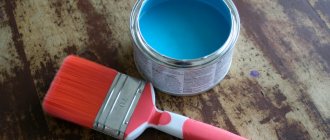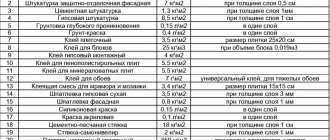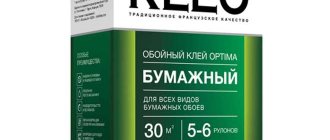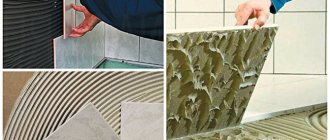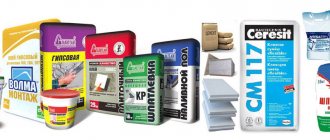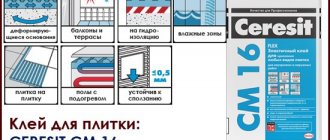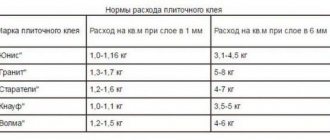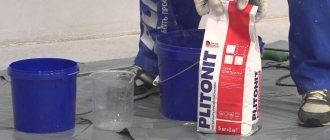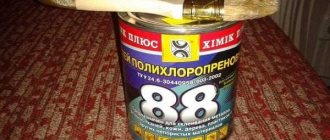To lay tiles you need glue. Perhaps everyone knows this. But how much is needed? 1 bag of 25 kg? 10 bags of 5 kg? Often the decision is made at the last moment at the market or in the store and you have to buy as much as the seller said. Is he right or wrong? In another situation, your foreman buys as much glue as you need (he knows for sure), tells you the number, but you can’t check it. Or you want to plan all the costs of repairs in advance (a useful, but utopian activity) and calculate how much installation will cost you. What to do? How much glue do you need?
First the basics: tile adhesive is usually measured in kilograms. The amount you need is determined as the glue consumption per square meter of installation, multiplied by the total number of meters. Everyone usually knows the laying area, so all that remains is to find out how much glue is needed per square meter. There is no definite answer to this question, but we will help you roughly figure out how much glue you need. To answer this question, you need to know the following:
1) Type of glue
Typically, tile adhesives fall into 3 broad categories: cement-based adhesive , dispersion adhesive , and epoxy adhesive . In the first case, you buy a bag of cement (with various additives) and dilute it with water or a latex additive. This is the most popular option: economical and not difficult to work with. The average consumption of such glue ranges from 1 to 1.9 kg per square meter per 1 mm of glue thickness . (For example, 1 kg per m2 for Eunice Granite glue, 1.5 kg per m2 for Litokol K66 glue and Hercules Basic glue, etc.) In the second case, you buy a ready-made liquid mixture (resin-based), which does not need to be diluted with anything. In the third case, you buy a liquid resin-based composition and a catalyst. You need to mix both components, a chemical reaction will occur and as a result an adhesive solution will be formed (this is a little more complicated, but this composition is not afraid of water and cold, is not subject to shrinkage, cracking and adheres perfectly to the surface). It is incorrect to compare the total amount of such a mixture in kilograms with the consumption of a cement-based adhesive mixture.
Types of glue
Before determining the consumption of tile adhesive per 1 m2, you need to choose what composition will be used. There are three main types of tile mixture:
1. Dispersion - a ready-made composition, extremely convenient in that you do not need to spend time on its preparation. It is good because it has ideal plasticity and viscosity, allowing you to apply the solution in an optimally thin layer.
2. Cement-based adhesive, the most inexpensive mixture, which is sold dry and needs to be diluted. Thanks to its cheap components, it is very popular and is used in 80% of cases. This type has its own method of calculating consumption, approximate, but giving at least some idea of the required quantity. To determine the consumption, you need to know the thickness of the adhesive layer, which is calculated based on the size of the tile. We multiply the thickness by 1.3 (this is the average weight of the tile adhesive) and get the desired result.
3. Epoxy mixture is usually used by professional finishers, since its production requires some experience. For dilution, a special catalyst is used, which provokes a chemical reaction.
2) Tile size
Typically, the larger the tile size, the larger the adhesive layer should be. As a rule, for small tiles (up to 10x10 cm) for cement-based adhesives for thin-layer installation, this layer is slightly less than 2 mm. For tiles with sides from 20 to 30 cm, the layer thickness most often ranges from 2 to 3.5 mm, for tiles from 30x30 to 50x50 the layer can be from 3.5 to 4.5 mm and for large tiles, the layer can be 4-5 mm. For large slabs (from 60 cm), it is also recommended to apply a layer of adhesive (about 1 mm) to the back of the tile. The dimensions given are approximate; it is quite possible that you will lay 45x45 cm tiles on a much thinner layer. It is important to take other factors into account.
| About the size of the spatula and the thickness of the glue Most often, when purchasing glue, the technical information for each size of tile will indicate not the layer of glue in millimeters, but the size of the spatula teeth that the factory recommends for application. For example: for 30x30 tiles use spatula 8, and for 50x50 tiles use spatula 12. Not a word about layer in mm. Why is this happening? Because measuring the adhesive layer in millimeters during application is not an easy task, how and with what will you measure? In addition, if you apply an even layer of glue, it is likely that visually it will seem even to you, but in fact it will have differences in height. If you lay tiles on such an uneven adhesive surface, you will most likely end up with air holes in some places under the tiles, which will sooner or later cause the tiles to chip. Therefore, factories recommend first applying the glue with the smooth end of a spatula, and then combing and leveling it with a serrated edge. The most commonly used spatula tooth sizes are 6, 8, 10 and 12 mm. The dimensions of the spatula are predetermined, each factory knows the properties of its glue, so it is much easier to predict the exact layer that you will put. Therefore, you can often see in the instructions the glue consumption in kg, depending on the type of spatula. (For example, for Ceresit CM12 adhesive for 30x30 cm tiles, the instructions recommend using a spatula with 10 mm teeth, and the adhesive consumption is immediately given as 4.2 kg per square meter). However, do not think that when using a spatula with 8 mm teeth you will get an 8 mm layer of glue. 8 mm is the initial height of the ridges that would be left behind by a spatula held at an angle of 90 degrees. But, firstly, you will move the spatula at an angle, and the initial height will be less, and secondly, when you lay the tile on top, it will press the glue and it will be distributed over the entire surface. Typically, the adhesive layer will be in the range of 0.3 - 0.5 of the size of the spatula teeth. For example, for an 8 mm spatula, the glue thickness can be 2.4 - 4 mm. This proportion is approximate, since you can lay the glue at different angles, besides, different glues have different properties and only the glue manufacturer can tell you what height of glue you will get when using a given spatula. |
Why does consumption depend?
Type of glue
Glue can be different: cement-based, epoxy and dispersion.
- Cement dry mixes. Diluted with plain water or with the addition of an elasticizer. This is an inexpensive and easy-to-use option.
- Epoxy glue is sold in the form of two components; to get started, you need to mix them.
- Dispersion adhesive is supplied already diluted; there is no need to mix it.
It is incorrect to compare the consumption of tile adhesive on different bases; in this article we are talking only about cement types.
Tile sizes
The larger the tile size, the thicker the layer of adhesive needed to lay it. The thickness of the layer is adjusted by the size of the comb teeth. Each manufacturer indicates on the packaging the recommended tooth size and tile format.
For example, for a 10*10 cm tile, the adhesive layer should be 2 mm. To get this thickness, you need a 4 mm comb. To obtain a uniform layer, apply the glue in an even layer with a regular spatula, and then go over it with a comb. The thickness is adjusted due to different angles of the spatula.
Work technique and qualifications of the master
Incorrect application of glue
An amateur tiler will spend more glue due to lack of experience. Everything is clear here: part of the mixture will dry out, part will be used incorrectly, will be reworked, and the cladding will turn out uneven.
The method of application will also affect the glue consumption. For example, if you apply glue to the tile itself and prime the surface with it to improve adhesion, more mixture will be needed.
Substrate quality
Ideally, the surface should be flat, then when laying tiles in thin layers, glue consumption will be low. https://www.youtube.com/watch?v=DXXP61OQDRU There are holes, unevenness on the walls and floor, or even worse - installation goes directly on the warm floor. Depressions up to 5 mm can be locally corrected with the same glue at least a day before installation. But large bumps, wall obstructions and large irregularities must be corrected in advance with plaster, plasterboard or cement-bonded particle board.
Another factor on which glue consumption depends is the porosity of the base and tiles. Laying Cotto on cellular concrete will require more adhesive than covering a concrete floor with porcelain stoneware.
comments powered by HyperComments
No similar entries found.
3) Type of tile
The back surface of the tile absorbs the adhesive. But different types of material differ in porosity - handmade and cotto tiles are very porous, they absorb more glue. Glazed industrial tiles absorb less, and porcelain tiles absorb even less. Most often, manufacturers produce special adhesives for each type of material, which takes these features into account. But there are also universal adhesives, so you will need to take into account the difference in absorption for different materials. If you are installing stone, manufacturers will often also ask you to apply an additional layer of adhesive to the back of the material.
In addition, it is important to pay attention to the evenness of the back surface of the tile. Handmade and clinker tiles often have an uneven back surface, so it is recommended to apply an additional thin layer of adhesive. This will increase consumption.
If you plan to lay tiles of different thicknesses on the same surface, you will have to compensate for this difference using adhesive. Be prepared for that. that consumption will increase.
Factors affecting glue consumption
The first thing the mixture consumption depends on is the type of surface and its general condition. The smoother the wall and the fewer irregularities and cracks there are, the less glue is used. That is why professional builders recommend pre-preparing the base using a less expensive finishing material such as plaster.
In addition, the back side of the tile may also have an uneven surface, and then an additional layer of mortar is applied to it.
The next parameter that determines the required amount of glue is the material of both the wall and the tile itself.
Each material has its own porosity, depending on which it has a certain absorbency. For example, concrete walls absorb the least amount of mortar. To reduce the consumption of tile adhesive per 1 m2, the base is carefully treated before
Tiles are also made from different materials. The smallest amount of glue disappears on porcelain stoneware panels, the largest porosity is on cotto tiles.
The size of the panels also plays a role; the larger the tile, the thicker the layer should be.
Much depends on the installation method and the professionalism of the craftsmen. The more experienced the finisher, the thinner the layer of glue he can apply without losing the quality of the fastening.
4) The base on which the tiles are laid and the technology for laying the tiles
Before laying, you need to know the condition of the surface on which you will lay the tiles. Ideally, it should be an absolutely flat plane, without differences in height. In practice, most often there are 2 situations: in the first case, the surface is as level as possible and the differences in height do not exceed 3 mm. In this case, you can lay the tiles using the thin-layer laying method - this means that the layer of adhesive will be minimal, and the adhesive itself will be intended only to adhere the tiles to the base. Most often, in such cases, the adhesive layer will not exceed 5 mm (and will remain within the limits specified above). But the total consumption of glue in any case will depend on differences in the height of the base and irregularities (which it will fill). In the second case. the surface may be difficult and uneven. There are adhesives that simultaneously level the surface and glue the tile to the base. Usually they can handle height differences of up to 30 mm. This technology is called thick-layer laying and the adhesive layer in this case will be determined by the presence and nature of irregularities and can reach up to 30 mm. Naturally, with this installation method, the glue consumption will be significantly higher. Quite often, this method is used when laying tiles that have strong differences in thickness (for example, this method is suitable for laying clinker with a highly profiled back side and handmade tiles with an uneven surface. If you try to lay such uneven tiles on a thin layer of glue, the consequences will be depressing: the final surface may be uneven, the tile may not stick due to voids, etc.) Accordingly, you must know exactly how you will install it before calculating the glue consumption. The smoother the surface, the less glue will be needed and vice versa. In addition, one should take into account the fact that the bases on which the installation is carried out have different porosities. For example, a relatively porous cement mortar base absorbs more adhesive than a concrete slab, so the adhesive consumption will be greater. And one more thing: when laying on a vertical surface (especially external facades), it is often recommended to apply glue not only to the base, but also to the back side of the tile for better adhesion and to avoid the appearance of voids under the tile. In this case, glue consumption will increase and you should take this into account.
Instructions for use
You can start laying work at an air temperature of +5...+30°C. Humidity indoors or outdoors should not exceed 75%.
Surface preparation
- Cleaning the surface of old finishes, removing crumbling plaster or screed.
- Leveling the base. Height differences of no more than 0.1 cm per 1 square meter are allowed not to be leveled. All defects whose depth exceeds this indicator are plastered. The Yunis company provides a wide range of plaster mixtures. If the surface is not leveled, the adhesive composition will be applied and dry unevenly, which causes the tiles to peel off and cracks to appear on it.
- When the tile cladding is laid on the old coating, notches are made every 50 mm in a checkerboard pattern to increase adhesion.
- The base is degreased and dried.
- When working in damp, basement areas, it is recommended to waterproof with mastic.
- The base is primed 1-2 times. Overly porous surfaces are primed especially carefully.
There is no need to pre-soak the tiles and base.
Mixing the solution
Dilute Eunice only in clean containers. The dry mixture must be diluted with water. The proportion of powder and liquid is indicated on the glue packaging. Next, the composition is thoroughly kneaded until smooth for about 3-5 minutes. The mixture is left at rest to ripen for 3-5 minutes. and mixes again.
You can dilute it manually or with construction tools (mixer, drill with attachment). Using the manual method, no more than 1 kg of the mixture is diluted at a time. The diluted glue is used within a maximum of 3 hours, otherwise it thickens. To give the composition a working consistency, it is kneaded again with a mixer without adding liquid.
If you change the proportions during cooking or add other ingredients, the adhesion of the glue will weaken.
Applying glue
- The mixture is applied to the base with a trowel or spatula. A layer 0.3-1.5 cm thick is leveled with the serrated side of a spatula or a grater-comb. When working with large tiles, use a spatula with teeth more than 0.8 cm high. The weight of the tiles should not exceed the maximum permissible value.
- The tile is pressed against the applied adhesive layer. The distribution of the composition should be uniform without the formation of voids; this is achieved by pressing wave-like on the tiled surface or by tapping it with a rubber hammer.
- When the material is laid within 15-20 minutes, it is possible to correct its position and level it. To ensure that the seams have the same thickness, special crosses are used.
The glue is applied to the surface area that will be covered during the viability of the mixture.
For outdoor work, when installing large tiles, marble slabs or when gluing onto a porous, embossed surface, the composition is applied not only to the base, but also to the back of the tile.
The drying time of the glue depends on its type, layer thickness and other factors, but on average, within a day you can start rubbing the seams. When the tiles are laid on a warm floor, the heating turns on only after 4 weeks.
5) Brand and composition of glue
Different brands of adhesives contain different additives (to give greater adhesion, elasticity, change the setting speed, resistance to slipping, temperatures, etc.). All this changes the density of the glue, so two 25 kg bags can contain different volumes of material, which, accordingly, changes its consumption. In order to more accurately calculate the material consumption, it is better to know the manufacturer and the name of the glue in order to be able to check its consumption according to the information stated by the manufacturer. (For example, the standard rate of consumption of Eunice Granite glue is 1 kg for each mm of glue, the rate of Litokol K80 is 1.35 kg for each mm. With a glue thickness of 4 mm for an area of 20 meters, the difference will be (approximately, other things being equal) 20 kg (80 kg versus 108 kg). Therefore, if you want more accurate calculations, be sure to look at the manufacturer’s data.
Technical characteristics and properties
Self-leveling Ceresite has the following technical characteristics:
- The initial setting occurs after half an hour, so all distribution work is carried out quickly, which causes inconvenience for the craftsmen, especially those who are new to this business.
- The operating temperature should be between 5–30 degrees, humidity 80%.
- The operating temperature can reach +70 degrees only after complete drying (after a month from pouring, the strength reaches 4 MPa).
- The floor can be used a day after pouring.
- To prepare a solution from a dry composition weighing 25 kg, you will need 4.5–4.8 liters of purified water.
The prepared solution is quite liquid, spreads over all the cracks, crevices, and depressions, thereby forming a monolithic coating. The composition includes special additives that accelerate the polymerization process. This is very convenient; there is no need to stop the repair process.
6) Weather conditions
The normal temperature for laying tiles is from +5 to +40 degrees Celsius. Ideal - around 18-24 degrees. The higher the temperature at which you lay the tiles, the more water evaporates from the surface of the adhesive and the greater its consumption. At low temperatures (below zero), the glue begins to deteriorate and it is extremely difficult to predict its consumption. It is also important to pay attention to the wind. If you are laying tiles outside, if there is a strong wind, moisture will again begin to leave the surface and glue consumption will increase.
7) Working technique and qualifications of the stacker
The glue consumption depends on how you use the tool. With different angles of inclination of the spatula, the thickness of the applied glue changes (for example, at an angle of 60 degrees, the glue consumption may be greater than at an angle of 45 degrees. The difference can be up to 25 percent). Likewise, trowels with different tooth shapes will distribute different amounts of glue: a V-shaped trowel will typically distribute slightly less glue than a U-shaped trowel, which will in turn distribute less. than a square tooth spatula. If you are laying tiles for the first time, then the glue consumption may differ from the standard due to the fact that you either practice, or break the technology, or for some other reason some of the glue is wasted. In this case, it is always better to buy material with a reserve so as not to stop the installation in the middle of the process.
Calculation of the required amount of glue
How to quickly calculate the amount of tile adhesive you need? There are several ways.
The easiest one is if you know exactly what kind of glue you need. For example, you have been laying tiles for many years and know for sure that you want Eunice 2000 or Mapei Granirapid. Just go to the manufacturer’s website and find the calculator section (such sections are on the websites of all manufacturers). In the calculator, just enter the size of the tile, the area of the room and the brand of glue, click on the calculate button - and you will get a ready answer in kilograms. This figure can then be increased if you know for sure that you will use glue to level the height between the tiles, work in conditions where the back surface also needs to be covered with glue, and under other circumstances that increase consumption.
If you don’t yet know what kind of glue you will use, but want to estimate the cost of repairs, use the figures above. We will assume that you will use cement-based tile adhesive (this is the most popular and simplest option). Then you can take the average temperature in the hospital - glue consumption is 1.3 kg per 1 mm of glue layer. Multiply by thickness. glue. Let's say you lay 30x30 cm tiles on the floor. Then, with an average layer of 4 mm (see the paragraph about tile size), the glue consumption will be 5.2 kg per 1 m2 of installation. If you need to lay 20 meters of tiles, you will need 20 * 5.2 = 104 kg of tile adhesive. If you decide to lay 10x10 cm tiles on the same area, you will need 1.3 * 2 * 20 = 52 kg of glue. If you decide to lay 60x60 cm tiles, then you will spend approximately 1.3 * 6 * 20 = 156 kg of glue
It is important to understand that this value is very approximate, and based on it you cannot go to the store and order glue. Let us repeat once again that adhesives are different, they all have different properties and consumption, so it is better to at least know the brand of glue. But this figure will help you navigate expenses and planning; at least the final result is unlikely to be ten times more or less.
And the third method, which is more suitable for sellers in a tile store. Suitable if the buyer asks to roughly say how much glue will be needed (without details, just for estimation). You need to take half the thickness of the tile in mm and multiply it by the average adhesive consumption per mm of the brand you sell. If you don’t know the consumption or there are several brands, multiply by the hospital average of 1.3. Typically, small-sized industrial tiles are quite thin (5-6 mm), medium-sized porcelain tiles are 10 mm thick, and thicker porcelain tiles are from 12 mm thick. Therefore, for porcelain stoneware 45x45 cm (10 mm thick) we get 5 * 1.3 = 6.5 kg per meter, which will give 130 kg per 20 meters and will be relatively close to the truth. Of course, you can’t issue an invoice based on such criteria, but at least you can name the order. In any case, we advise you to always refer to the recommendations of the adhesive manufacturer, and also keep in mind that the amount of consumption will vary depending on the installation conditions (listed above).
Glue consumption rate for popular brands
To help you a little with your calculations, we have collected average consumption rates for the most popular brands of glue. More detailed information on each type of glue is listed below, the summary information is as follows:
Unix glue : average consumption rate is 1-1.16 kg per 1 m2 with a layer of 1 mm of glue
Ceresit glue : average consumption rate is 1.4-1.6 kg per 1 m2 with a layer of 1 mm of glue, or from 1.5 to 6 kg per m2 depending on the size of the spatula and the type of glue
Litokol glue : average consumption rate is 1.3-1.5 kg per 1 m2 with a layer of 1 mm of glue, or from 2.5 to 6 kg per m2 depending on the size of the spatula and the type of glue
Hercules glue : average consumption rate of about 1.5 kg per 1 m2 with a layer of 1 mm of glue
Mapei glue : average consumption rate is around 1.2-1.6 kg per 1 m2 with a layer of 1 mm of glue, or 2-8 kg depending on the size of the spatula and the type of glue
How to calculate it yourself
A calculator is a handy thing, but if you doubt the accuracy of the data provided, perform the calculations yourself. To do this, first of all you will need to determine the thickness of the adhesive layer. It varies depending on the size of the tile itself:
- small tiles, mosaic – 2-3 mm;
- average element size – 3-5 mm;
- large tiles - 6-9 mm.
If we are talking about porcelain stoneware, the layer thickness will increase to 17-20 mm, because the material is heavy and must be securely fixed.
Important! There is no need to exceed the optimal layer thickness, otherwise it will take a long time to dry. Standard indicators should be adhered to.
When making calculations, it is necessary to take into account the features of the surface itself. For example, if we are talking about finishing the floor with standard ceramic tiles, the thickness of the pillow will depend on the presence of unevenness on the base:
- flat surface – 4 mm;
- floor with minor defects – 7-9 mm;
- base with noticeable level differences - up to 20 mm.
Attention! In case of significant unevenness, the highest point should be taken as the level. So all the depressions will be filled with a special composition. If the base has large depressions, a leveling screed must first be made.
Now we begin to determine the optimal consumption of tile adhesive per 1 m2. Initially, you need to study the product packaging, finding here the standard recommendations from the manufacturer. They are indicated taking into account a layer thickness of 1 mm, as well as a flat surface. Now determine the height of the adhesive pad for your case, multiply it by the basic indicators taken from the packaging. You have received the average consumption rate of tile adhesive per 1m2. Multiply this figure by the number of squares to be finished. Be careful! Add another 10% to the existing figure to eliminate the possibility of shortages due to minor costs and unforeseen circumstances.
Ceresit glue consumption per 1m2
Ceresit (Ceresit) is a popular brand of building mixtures produced by the German concern Henkel. In 2003, the company opened a plant for the production of Ceresit mixtures in Russia in the city of Kolomna, Moscow region, and then another plant in Chelyabinsk and Ulyanovsk. The adhesives listed below are produced in Russia.
Ceresit SM 9 . Tile adhesive for interior use
Consumption - 1.6 kg per 1 m2 per 1 mm layer, or from 2 to 4.2 kg/m2 depending on the size of the trowel teeth and tile format
| Tile size. cm | Size of spatula teeth. mm | Average glue consumption, kg per m2 |
| up to 10x10 | 4 | 2 |
| up to 15x15 | 6 | 2,7 |
| up to 20x20 | 8 | 3,2 |
| up to 30x30 | 10 | 4,2 |
Ceresit SM 11 Plus.
Adhesive for fixing ceramic tiles for interior and exterior use and for porcelain tiles for interior use
Consumption: 1.4-1.5 kg per 1 m2 per 1 mm layer, or from 1.7 to 4.2 kg/m2 depending on the size of the trowel teeth and tile format
| Tile size. cm | Size of spatula teeth. mm | Average glue consumption, kg per m2 |
| up to 5x5 | 3 | 1,7 |
| up to 10x10 | 4 | 2 |
| up to 15x15 | 6 | 2,7 |
| up to 25x25 | 8 | 3,2 |
| up to 30x30 | 10 | 4,2 |
Ceresit SM 12.
Adhesive for fixing large format floor tiles
Consumption: 1.6 kg per 1 m2 per layer of 1 mm. or from 2.7 to 6.0 kg/m2 depending on the size of the trowel teeth and tile format
| Tile size. cm | Size of spatula teeth. mm | Average glue consumption, kg per m2 |
| up to 15x15 | 6 | 2,7 |
| up to 25x25 | 8 | 3,6 |
| up to 30x30 | 10 | 4,2 |
| over 30x30 | 12 | 6,0 |
Ceresit SM 117.
Elastic adhesive for facade tiles, porcelain tiles and facing stones
Consumption: 1.4-1.5 kg per 1 m2 per 1 mm layer, or from 1.8 to 4.7 kg/m2 depending on the size of the trowel teeth and tile format
| Tile size. cm | Size of spatula teeth. mm | Average glue consumption, kg per m2 |
| up to 10x10 | 4 | 1,8 |
| up to 15x15 | 6 | 2,5 |
| up to 20x20 | 8 | 3,2 |
| up to 30x30 | 10 | 3,6 |
| up to 40x40 | 12 | 4,7 |
Ceresit SM 16.
Elastic tile adhesive for exterior and interior use
Consumption: 1.55 kg per 1 m2 per 1 mm layer, or from 1.5 to 3.2 kg/m2 depending on the size of the trowel teeth and tile format
| Tile size. cm | Size of spatula teeth. mm | Average glue consumption, kg per m2 |
| up to 10x10 | 4 | 1,5 |
| up to 15x15 | 6 | 2,1 |
| up to 25x25 | 8 | 2,7 |
| up to 30x30 | 10 | 3,2 |
Ceresit SM 17.
Highly elastic tile adhesive for exterior and interior use
Consumption: 1.45 kg per 1 m2 per 1 mm layer, or from 1.5 to 4.1 kg/m2 depending on the size of the trowel teeth and tile format
| Tile size. cm | Size of spatula teeth. mm | Average glue consumption, kg per m2 |
| up to 10x10 | 4 | 1,5 |
| up to 15x15 | 6 | 2,1 |
| up to 25x25 | 8 | 2,7 |
| up to 30x30 | 10 | 3,2 |
| up to 40x40 | 12 | 4,1 |
Ceresit SM 115.
Adhesive for marble tiles and glass mosaics
Consumption: 1.5 kg per 1 m2 per 1 mm layer, or from 2.5 to 4.4 kg/m2 depending on the size of the trowel teeth and tile format
| Tile size. cm | Size of spatula teeth. mm | Average glue consumption, kg per m2 |
| up to 10x10 | 4 | 2,5 |
| up to 15x15 | 6 | 3,4 |
| up to 25x25 | 8 | 3,9 |
| up to 30x30 | 10 | 4,4 |
How the size and type of tile affects the choice of adhesive and its consumption
Tiles are defined by two key characteristics: size and type.
The size of the tile determines what tool you will use when laying it. It is recommended to apply tile adhesive with a notched trowel. It is the height of the teeth in the spatula that directly affects the glue consumption and is used in calculations. The logic is simple - the higher the height of the teeth, the greater the consumption.
If you don’t yet know which notched trowel will be used to lay the tiles, but have already decided on the size of the tiles, you can use this correspondence table:
| Tile size | Spatula teeth size |
| up to 10x10 cm | |
| up to 15x15 cm | |
| up to 25x25 cm | |
| up to 30x30 cm | |
| from 30x30 cm |
The type of tile, material and purpose, in turn, influence the choice of the type of tile adhesive.
The following table will help you choose the right adhesive depending on the type of tile:
| Fast-hardening | Leveling | Elastic | Highly elastic | Heat resistant | Frost-resistant | Thick layer | Universal | Reinforced fixation |
| Ceramic tile | ||||||||
| Clinker tiles | ||||||||
| Facade tiles | ||||||||
| Mosaic | ||||||||
| Porcelain tiles | ||||||||
| Marble | ++ | |||||||
| Granite | ++ | |||||||
| A natural stone | ||||||||
| Fake diamond | + |
Laying decorative floor or wall tiles is a very expensive undertaking. A significant portion of the cost usually goes not only to the tiles, but also to the tile adhesive needed to fix them. Such expenses are especially noticeable when the area being treated is large. Therefore, in order to save money, it is necessary to calculate the consumption of tile adhesive per 1 m2.
Litokol glue consumption per 1m2
Litokol is an Italian concern for the production of building mixtures. In 2002, the company opened production in Noginsk (Moscow region). All cement-based adhesives are manufactured in Russia, and resin-based adhesives are imported from Italy.
Cement based adhesives
Litoflex K 81.
Elastic, highly adhesive cement-based adhesive mixture for laying ceramic granite and ceramic tiles. For laying “tile on tile” on “warm” floors. Based on white cement.
consumption -1.35 kg/m2 per 1 mm of adhesive layer thickness. Glue consumption rates in details:
| Tile size. cm | Size of spatula teeth. mm | Average glue consumption, kg per m2 |
| from 2x2 to 5x5 | 3 | 2,5 |
| up to 10x10 | 6 | 3-3,5 |
| from 12x24.5 to 20x20 | 8 | 4-4,5 |
| from 20x30 to 30x30 | 10 | 5 |
| more than 30x30 | 12-15 | 6 |
Litoflex K 80.
Elastic, highly adhesive dry cement adhesive mixture for laying ceramic granite and ceramic tiles. For laying “tile on tile” on “warm” floors.
consumption -1.35 kg/m2 per 1 mm of adhesive layer thickness. Glue consumption rates in details:
| Tile size. cm | Size of spatula teeth. mm | Average glue consumption, kg per m2 |
| from 2x2 to 5x5 | 3 | 2,5 |
| up to 10x10 | 6 | 3-3,5 |
| from 12x24.5 to 20x20 | 8 | 4-4,5 |
| from 20x30 to 30x30 | 10 | 5 |
| more than 30x30 | 12-15 | 6 |
Litoflex K80 eco.
Elastic, highly adhesive dry cementitious adhesive mixture with low dust generation. For laying ceramic granite and ceramic and natural stone tiles. For laying “tile on tile” on “warm” floors. Frost-resistant
Glue consumption: 2.5-5 kg/m2 depending on the tile format and the condition of the base
Litokol X 11.
Reinforced cement adhesive mixture for laying tiles on floors and walls. Frost-resistant
consumption -1.35 kg/m2 per 1 mm of adhesive layer thickness. Glue consumption rates in details:
| Tile size. cm | Size of spatula teeth. mm | Average glue consumption, kg per m2 |
| from 2x2 to 5x5 | 3 | 2,5 |
| up to 10x10 | 6 | 3-3,5 |
| from 12x24.5 to 20x20 | 8 | 4-4,5 |
| from 20x30 to 30x30 | 10 | 5 |
| more than 30x30 | 12-15 | 6 |
Litofloor K66
Cement-based adhesive mixture for thick-layer laying of floor tiles made of porcelain stoneware, ceramics and natural stone, including large-format ones.
consumption -1.5 kg/m2 per 1 mm of adhesive layer thickness, but this value is very approximate
Superflex K77
Super-elastic, highly adhesive, cement-based adhesive mixture for laying facing slabs of porcelain stoneware, ceramics and natural stone, including large-format ones
nominal consumption -1.3 kg/m2 per 1 mm of adhesive layer thickness. However, this adhesive is used for high traffic areas, facades, industrial floors with high loads, and the manufacturer recommends that it also be applied to the back side of the tiles to avoid voids. Therefore, the final glue consumption will be individual and may be more than specified.
Litokol K 47
Cement-based adhesive mixture for laying ceramic tiles on floors and walls. For interior work. Not suitable for laying porcelain tiles
consumption -1.3 kg/m2 per 1 mm of adhesive layer thickness. Glue consumption rates in details:
| Tile size. cm | Size of spatula teeth. mm | Average glue consumption, kg per m2 |
| from 2x2 to 5x5 | 3 | 2,5 |
| up to 10x10 | 6 | 3-3,5 |
| from 12x24.5 to 20x20 | 8 | 4-4,5 |
| from 20x30 to 30x30 | 10 | 5 |
Litokol K 17
Professional dry adhesive mixture for laying ceramic tiles on floors and walls. Not suitable for porcelain tiles
consumption -1.3 kg/m2 per 1 mm of adhesive layer thickness. Glue consumption rates in details:
| Tile size. cm | Size of spatula teeth. mm | Average glue consumption, kg per m2 |
| from 2x2 to 5x5 | 3 | 2,5 |
| up to 10x10 | 6 | 3-3,5 |
| from 12x24.5 to 20x20 | 8 | 4-4,5 |
| from 20x30 to 30x30 | 10 | 5 |
Dispersion adhesives
Litoacryl Fix Ready-to-use dispersion adhesive based on synthetic resins, with inert filler and organic additives. Classification according to EN 12004.
| Tile size. cm | Size of spatula teeth. mm | Average glue consumption, kg per m2 |
| from 1x1 5x5 | 4 | 1,5 |
| 10x10 15x15 | 6 | 2-2,5 |
| 15x20 25x25 | 6-8 | 2,5-3 |
| 25x33 33x33 | 8-10 | 3-3,5 |
| 30x45 45x45 | 10 | 3,5-4 |
Litoacril LA315 Dispersion adhesive with zero vertical slip and extended open time for laying ceramic tiles. Ready for use, belongs to class D1TE.
| Tile size. cm | Size of spatula teeth. mm | Average glue consumption, kg per m2 |
| 10x10 15x15 | 6 | 2-2,5 |
| 15x20 25x25 | 6-8 | 2,5-3 |
| 25x33 33x33 | 8-10 | 3-3,5 |
| 30x45 45x45 | 10 | 3,5-4 |
Litoacryl Plus Dispersion adhesive with improved slip resistance and extended open time, ready for use. Based on water-based synthetic resin, inert filler and organic additives.
| Tile size. cm | Size of spatula teeth. mm | Average glue consumption, kg per m2 |
| from 1x1 5x5 | 4 | 1,5 |
| 10x10 15x15 | 6 | 2-2,5 |
| 15x20 25x25 | 6-8 | 2,5-3 |
| 25x33 33x33 | 8-10 | 3-3,5 |
| 30x45 45x45 | 10 | 3,5-4 |
Adesivo Universale LK78 Universal dispersion adhesive with extended open time for laying ceramic tiles. Belongs to class D1TE.
| Tile size. cm | Size of spatula teeth. mm | Average glue consumption, kg per m2 |
| from 1x1 5x5 | 4 | 1,5 |
| 10x10 15x15 | 6 | 2-2,5 |
| 15x20 25x25 | 6-8 | 2,5-3 |
Epoxy adhesives
L itoelastic Reactive two-component epoxy-polyurethane adhesive for laying all types of tiles on various surfaces, including elastic and vibrating ones. Suitable for creating waterproof coatings and leveling.
| Tile size. cm | Size of spatula teeth. mm | Average glue consumption, kg per m2 |
| from 1x1 5x5 | 4 | 2-2,5 |
| 10x10 15x15 | 6 | 2,5 |
| 15x20 25x25 | 6-8 | 2,5-3 |
| 25x33 33x33 | 8-10 | 3-3,5 |
| 30x45 45x45 | 10, double application | 4-5 |
| 50×50 60×60 | 10, double application | 4-5 |
| over | 10, double application | 4-5 |
Epoxystuck X90 Acid-resistant epoxy two-component grout mixture for filling tile joints from 3 to 10 mm wide. Component A consists of a mixture of epoxy resins, silica fillers and additives. Component B consists of a mixture of organic catalysts. Designed for acid-resistant grouting of joints with a width of 3 to 10 mm for external and internal floor and wall cladding made of any type of ceramic tiles and natural stone.
| Tile size. cm | Size of spatula teeth. mm | Average glue consumption, kg per m2 |
| clinker 12x24x1.2 25x25x1.2 | 5 – 8 – 10 | 1,16-1,86-2,33 0,74-1,19-1,49 |
| 10x10x0.6 15x15x0.6 | 3 – 4 – 6 | 0,56-0,74-1,12 0,37-0,50-0,74 |
| 15x20x0.6 25x25x1.2 | 3 – 4 – 6 – 8 | 0,33-0,43-0,65-0,87 0,45-0,60-0,89-1,19 |
| 25x33x0.8 33x33x1 | 4 – 8 – 10 | 0,35-0,70-0,87 0,38-0,75-0,94 |
| 30x45x1 45x45x1.2 | 4 – 10 | 0,34-0,86 0,33-0,83 |
| 50x50x1.2 60x60x1.2 | 6 – 10 | 0,45-0,74 0,37-0,62 |
